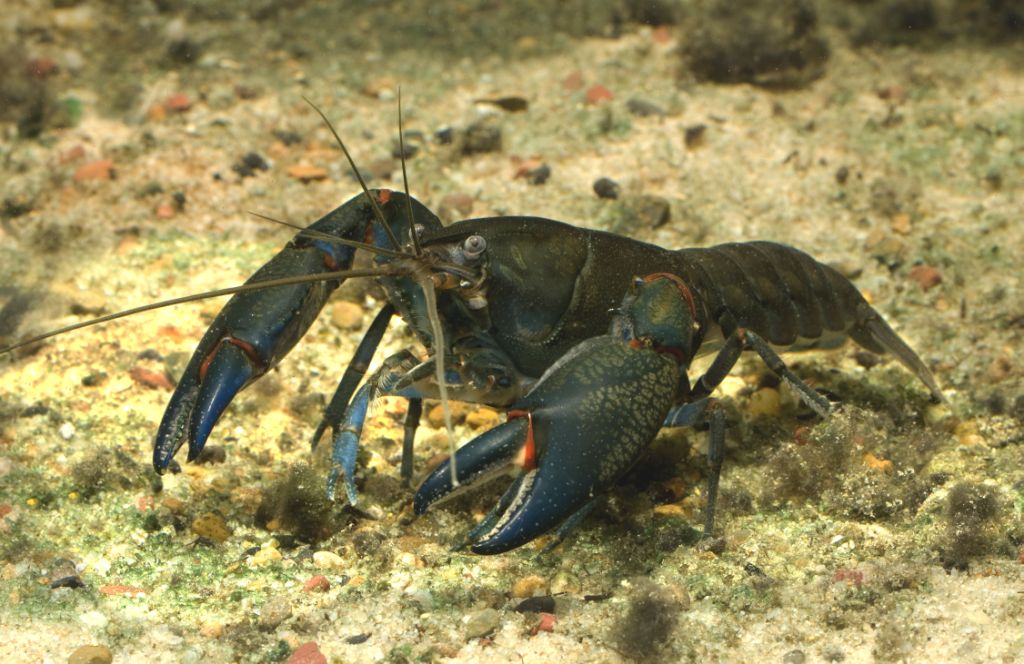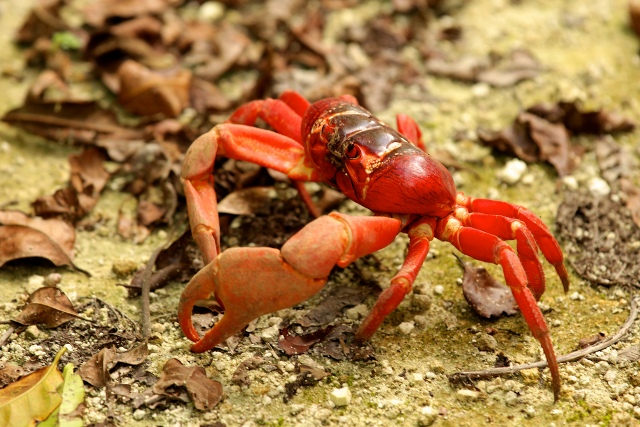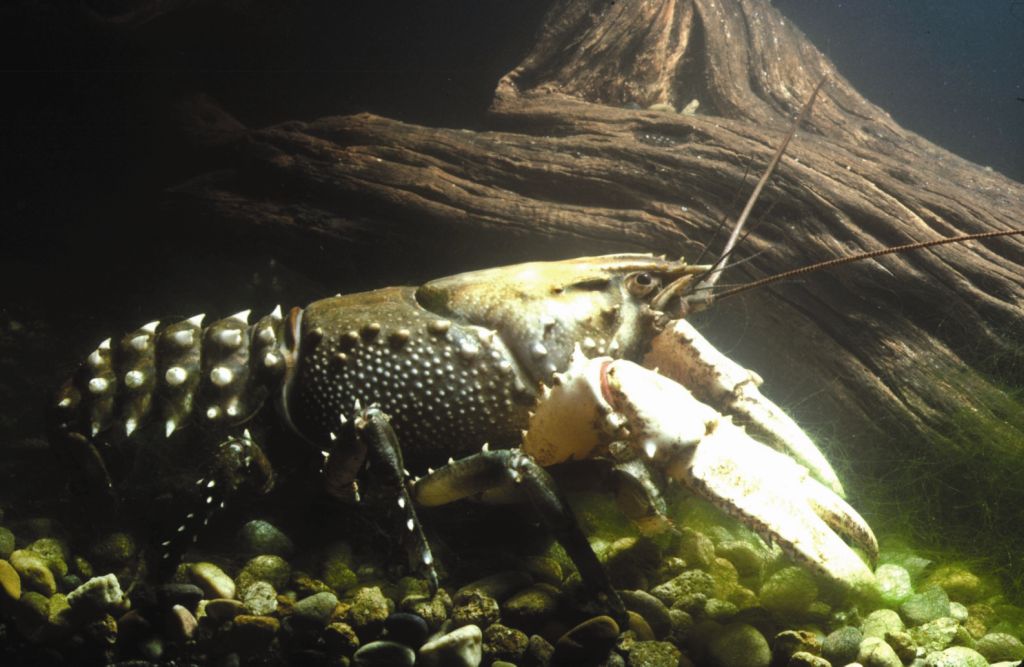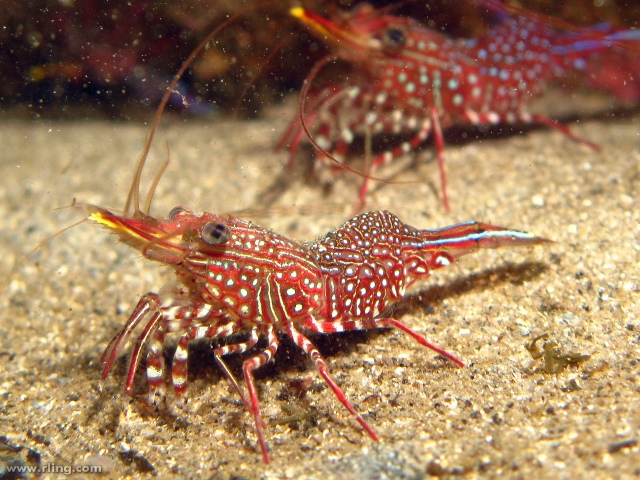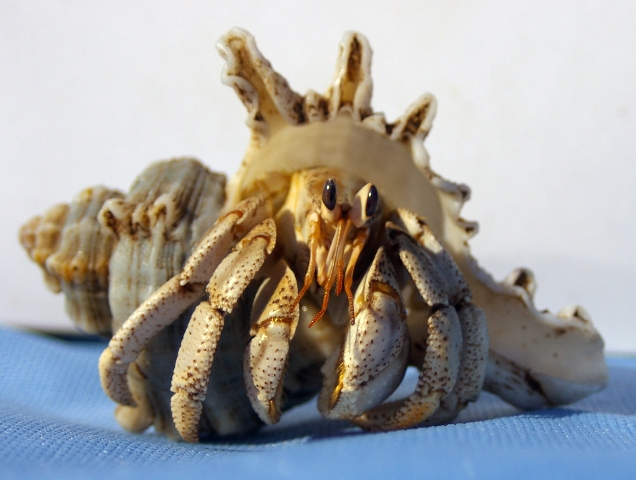Phylum Arthropoda
Subphylum Crustacea
Class Malacostraca
Order Decapoda
Common names: prawns, crabs and crayfish
Overview
Decapoda have the most diverse range of body forms found in the Crustacea and includes some of the most familiar, commercially important crustaceans such as prawns, crabs and crayfish. Decapods have stalked, compound eyes, the first pair of antennae with two very long rami (branches) and the second pair with one long and one very short ramus (except in crabs where all are short), which may be developed into a scale or blade-like structure (scaphocerite) in prawns and shrimps, but is typically absent in crabs and some crayfish. All decapods are also characterised by the presence of a large carapace that encompasses the head and thoracic body regions that are fused dorsally. The carapace curves around the sides of the thoracic region forming branchial chambers around the gills at the base of the thoracic legs. Water is fanned through the branchial chambers, keeping them ventilated with fresh water. Terrestrial crabs have modified gills and branchial chambers for extracting oxygen from air. The front 3 pairs of thoracic appendages function as mouthparts (maxillipeds). Decapoda means �ten legs� and indicates the five pairs of walking appendages (pereopods). The anterior pair (or sometimes the second pair) is enlarged and chelate (pincer- or claw-like) in crabs and crayfish, called chelipeds. Further appendages are found on the abdomen, with each segment often carrying a pair of biramous pleopods (swimmerets), the last of which (uropods) form part of the tail fan (together with the telson). Prawns and crayfish possess a well-developed, elongate, muscular abdomen, while crabs typically have a very broad and strongly build carapace and a greatly reduced abdomen without a tail fan that is folded beneath their thorax. Decapods range greatly in size from around 5 mm to some of the largest and heaviest arthropods such as the coconut crab (Birgus latro) weighing 4.1 kg and 400 mm in length or the Tasmanian giant crayfish (Astacopsis gouldi) at 5 kg in weight and over 800 mm long. Body colours, patterns and textures are also extremely diverse.
Distribution and diversity
Decapods inhabit all types of marine and freshwater habitats around the world. Approximately 9% of all decapods live in freshwater and only 1% of species are terrestrial and are sometimes found at elevations of up to 1,000 m or as far away as 15 km from the ocean where they must return to reproduce. There are over 8,000 described species worldwide and over half of these are crabs (Brachyura). Decapods occur Australia-wide in all the above-mentioned habitats, including the arid interior.
Life cycle
Decapod life cycles are as variable as their diverse morphology. Both internal and external fertilisation is reported. Males of crab and crayfish species are usually larger than the females and possess much larger pincers. The males also possess clasping organs used to hold the female during mating. The sperm is often encased in a spermatophore and the first and second abdominal appendages are modified to transfer them to the female. Prawns reproduce by releasing eggs into the water that then hatch as a nauplius (a larva with an unsegmented body with only a head, telson, antennules, antennae, mandibles and a simple nauplius eye). In crabs and lobsters, eggs are brooded or carried on the abdominal appendages (pleopods). Larvae hatch in a more developed stage than a nauplius. All terrestrial crabs must return to reproduce and spawn in water, and typically have pelagic larval stages. Many freshwater crayfish species undergo much of their development in the egg and hatch resembling adults in morphology with claws and strong legs. Some species have pelagic larvae that are swept into the ocean, but as juveniles they seek out and enter freshwater streams and rivers that flow into the ocean. Some prawn species can change sex during their lifetime.
Feeding
Most terrestrial and freshwater decapods are omnivorous scavengers, foraging for leaves, fruit and animal carcases. Many species dig burrows in mud and sand and only coming out to search for food under the protection of night. Crabs typically use their claws to break apart large food particles, then pass the smaller pieces to the mouthparts. A few can be predatory, using their claws to catch small fish that come within range. Prawns and crayfish use their fine pincer-like legs to pick over surfaces for edible organic detritus or to scrape algae before sweeping it forward to the mouth.
Ecology
Decapods are primarily marine. However, there are still many other species which occur in fresh surface and underground water and mountain and desert habitats including mud flats, mangrove forests, mountain streams, creeks, rivers, ponds, caves and along lakeshores. Aquatic species include crabs, prawns and crayfish while terrestrial decapods are represented primarily by crabs. Most aquatic decapods crawl along the substratum or burrow into it with some species prefering softer sand and clay whilst other species are found on gravel and rocky substrata. Some are active swimmers using their modified swimming legs or dart backwards by flicking their tail. They may be migratory, gregarious, cryptic, diurnal, nocturnal or noctidiurnal and are an important group in both aquatic and terrestrial food webs. On Christmas Island (Indian Ocean) terrestrial crabs are the dominant invertebrates, consuming leaves of trees and shrubs shortly after they fall, preventing the formation of thick leaf litter. Decapods are also an important food source to many vertebrates including birds, fish and mammals. Decapoda is the most commercially significant crustacean group. Harvested and cultured decapods are mostly marine (eg. shrimps (Atyidae), prawns (Palaemonidae), crayfish (Parastacidae) and crabs (Parathelphusidae)), but freshwater yabbies (Parastacidae: Cherax) are common in Australian aquaculture. All these groups quickly mature to an edible size, typically within 2 years. However, many of the larger freshwater crayfish and terrestrial crab species, which mature slower, are now protected as their numbers are in serious decline due to overharvesting, habitat degradation and exotic predators. Decapods are also relatively popular as pets, with shrimps, crabs, yabbies and hermit crabs commonly kept in aquariums.

Anaspides sp., endemic to Tasmania, Australia
Image credit:
� Stephen Zozaya used with permission
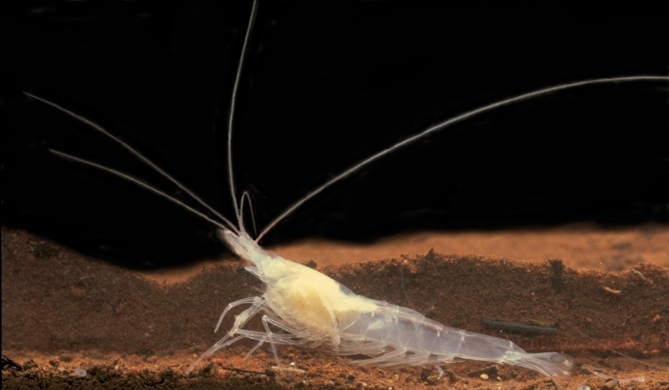
Blind cave shrimp - Cape Range, Western Australia.
Image credit: Photo by D. Elford � Western Australian Museum
